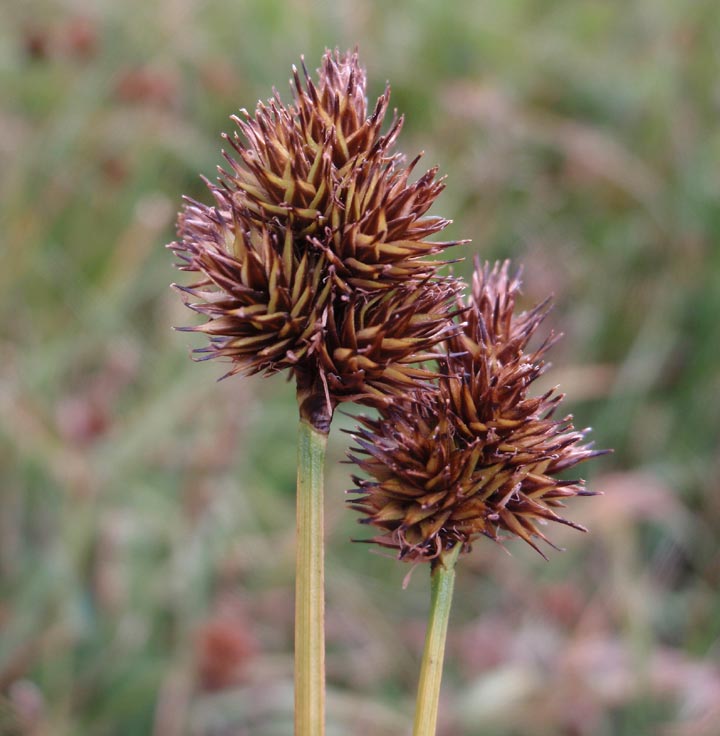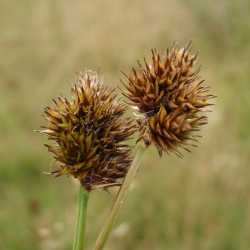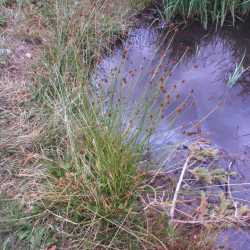|
|
|
|
Family: Cyperaceae
smallwing sedge
[Carex festivella Mack., moreCarex limnophila F.J.Herm., Carex macloviana subsp. festivella (Mack.) Á.Löve & D.Löve, Carex macloviana var. microptera (Mack.) B.Boivin, Carex microptera var. crassinervia F.J.Herm., Carex microptera var. limnophila (F.J.Herm.) Dorn] |
Plants densely cespitose. Culms 20-110 cm. Leaves: sheath adaxially white-hyaline, summits usually U-shaped, occasionally prolonged to 3 mm beyond collar; distal ligules (1-)2-3(-6) mm; blades (2-)3-7 per fertile culm, 10-50 cm × 2-5 mm. Inflorescences usually dense, light to dark brown and green, (0.8-)1.1-2.6 cm × 9.5-17.5 mm; proximal internode 0.5-3(-4) mm; 2d internode 0.5-2(-3) mm; proximal bracts scalelike or rarely leaflike, occasionally bristlelike, shorter than inflorescences. Spikes 4-10(-14), densely aggregated, individually indistinct, usually broadly ovoid, 5-9(-11) × 4.3-7 mm, base and apex rounded or sometimes acute. Pistillate scales brown, often red, purple, or coppery tinged, with pale or green midstripe, ovate, 2.4-3.5 mm, shorter than and narrower or as wide as perigynia, white margin 0-0.1 mm wide, apex acute. Perigynia ascending to spreading, green or straw colored to brown when mature, conspicuously (0-)3-8(-11)-veined abaxially, conspicuously 0-8-veined adaxially, veins usually not reaching top of achene, ovate to broadly ovate, flat except over achene or ± plano-convex because of air within, (2.8-)3.4-4.5(-5.2) × 1.1-2.4 mm, 0.3-0.5 mm thick, margin flat, including wing 0.2-0.5 mm wide, ciliate-serrulate at least on distal body, without metallic sheen, dull to slightly shiny; beak tip gold or red-brown to dark brown, cylindric, unwinged, at least 1 mm, ± entire for 0.2-0.6(-0.9) mm, abaxial suture inconspicuous or with white margin, distance from beak tip to achene 1.5-2.5(-2.8) mm. Achenes ovate to obovate, 1.1-1.6 × 0.7-1.2 mm, 0.3-0.5 mm thick. 2n = 80, 90. Fruiting late spring-fall. Moderately wet to dry meadows, slopes, along watercourses, disturbed habitats; 200-3400 m; Alta., B.C., Man., N.W.T., Sask., Yukon; Ariz., Calif., Colo., Idaho, Mont., Nev., N.Mex., Oreg., S.Dak., Utah, Wash., Wyo.; Mexico. In high montane habitats it is sometimes difficult to distinguish Carex microptera from C. haydeniana.
|




